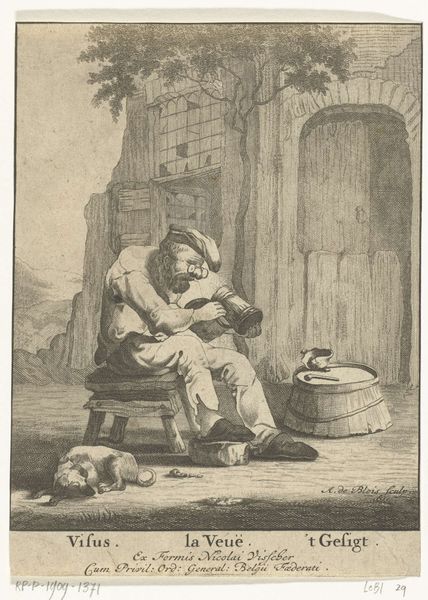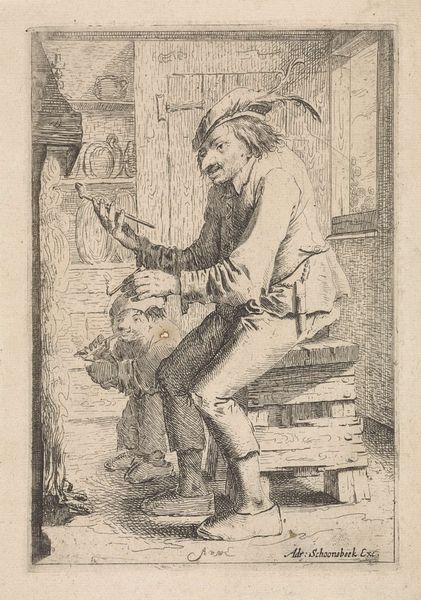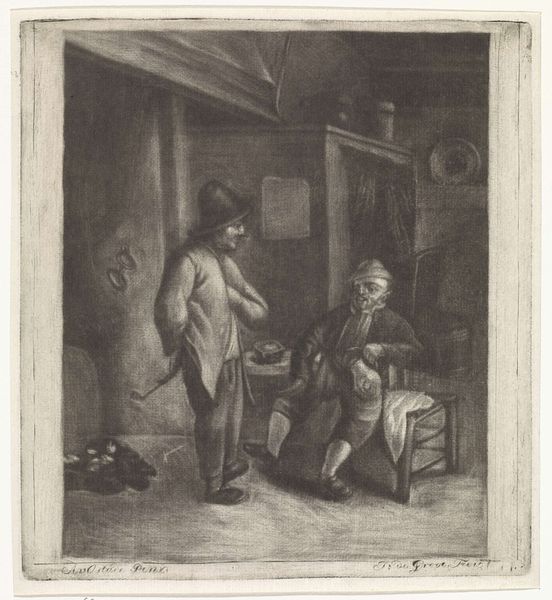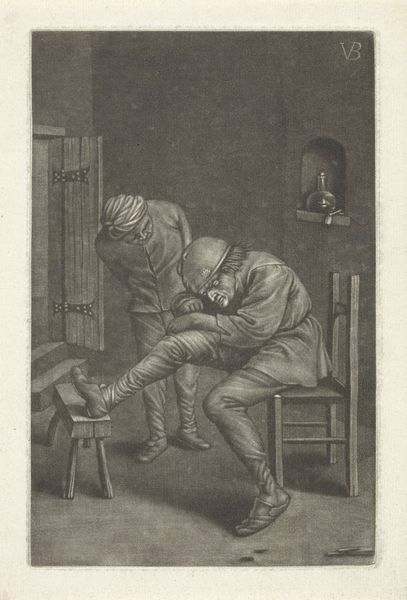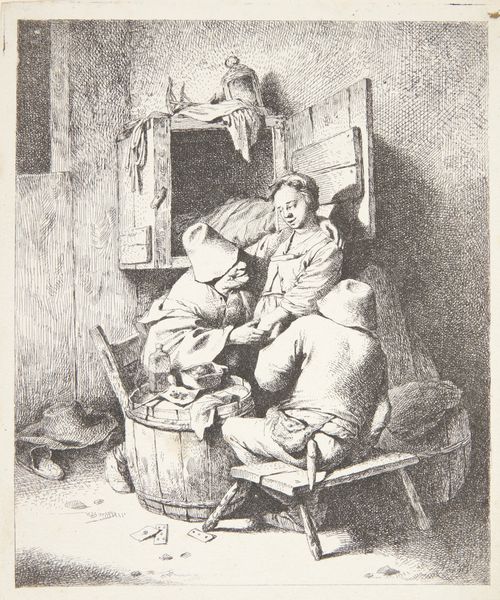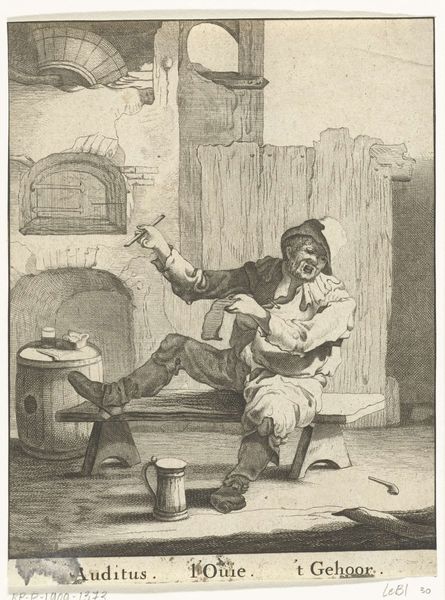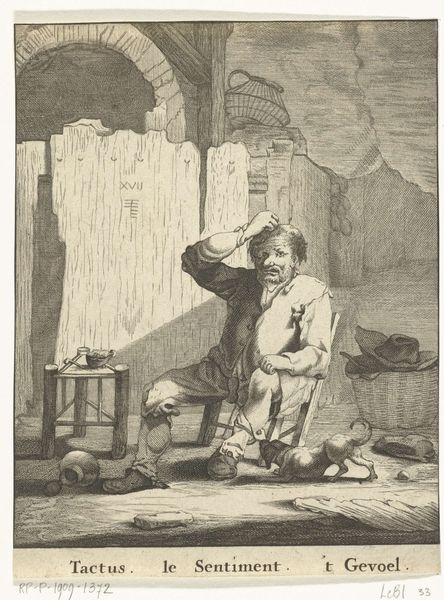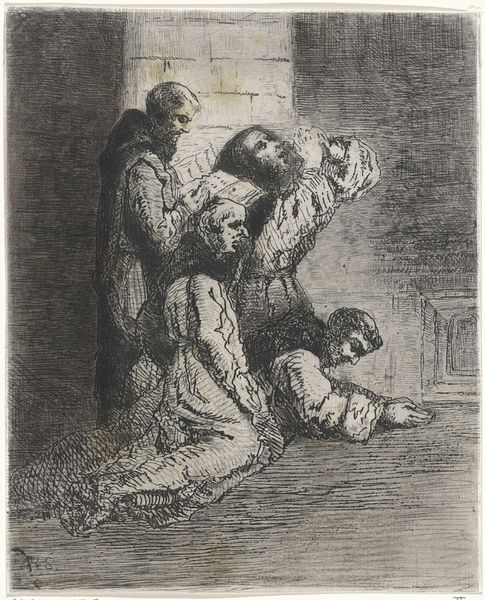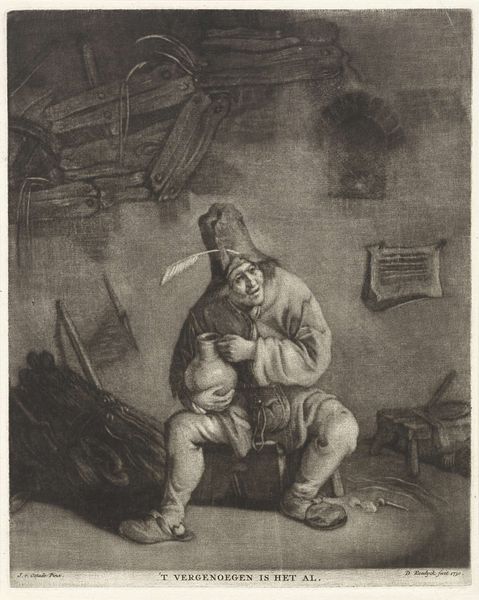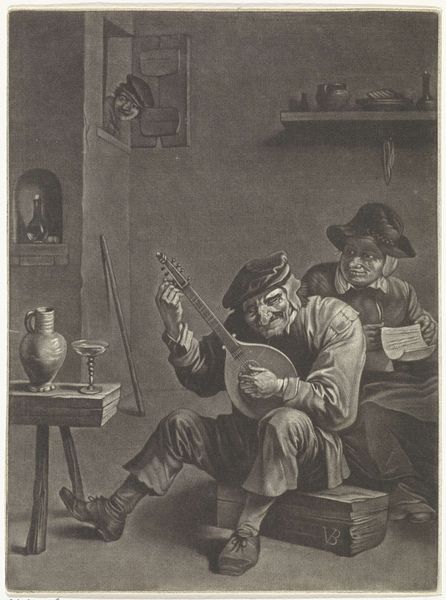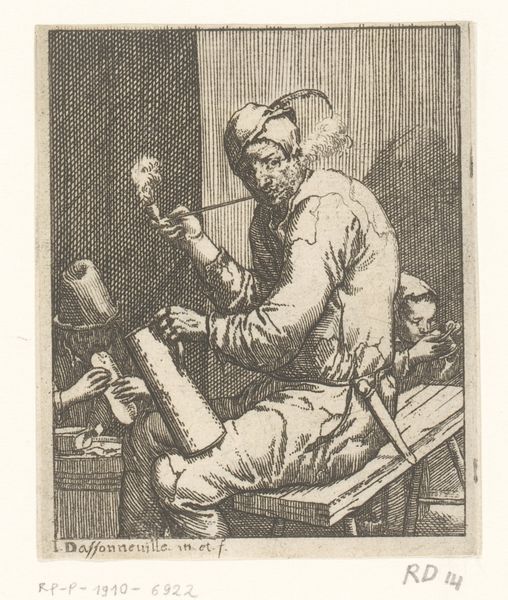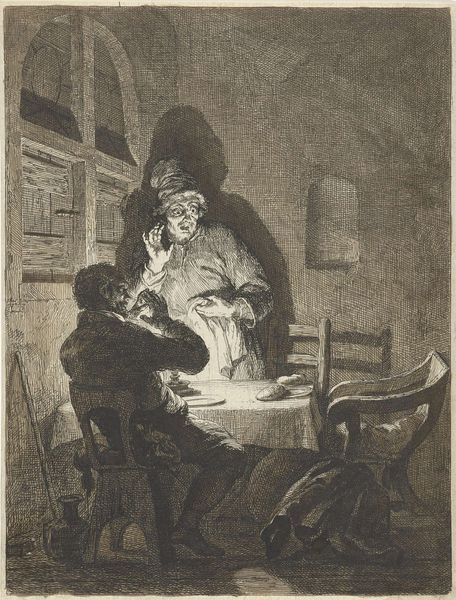
print, engraving
#
narrative-art
#
dutch-golden-age
# print
#
pencil sketch
#
old engraving style
#
figuration
#
line
#
genre-painting
#
engraving
#
realism
Dimensions: height 155 mm, width 120 mm
Copyright: Rijks Museum: Open Domain
Curator: Here we have "De Reuk: man met doos snuiftabak," or "The Sense of Smell: Man with Snuffbox" by Abraham de Blois. It's an engraving dating somewhere between 1679 and 1717, part of the Rijksmuseum's collection. Editor: My first impression is of utter domestic chaos. The fallen chair, the cluttered shelf, all rendered in such fine lines. It gives a strange immediacy to a decidedly…unglamorous scene. Curator: It's definitely not your typical idealized portrait. Prints like these had a public role in conveying social commentaries, using the everyday to communicate a larger message. Here, the depiction of smell – represented through snuff – gives an insight into 17th century sensory experience and social habit. Editor: Precisely. Look at the detail in the man’s clothing. It's not aristocratic finery; it's well-worn fabric, practical. And consider the snuff itself – the grinding, blending, packaging – a whole network of labor and materials went into this tiny luxury for the everyman. Curator: Yes, the seemingly mundane act of taking snuff also brings in trade, the rising middle class, leisure time… These "genre paintings," as we call them, give us a snapshot into the cultural fabric of the Dutch Golden Age. Editor: But it is about more than just an "illustration." I'm intrigued by de Blois’s artistic choices here – the use of engraving to replicate textures and tones. Notice how the fine lines create shadow and depth, pulling us into the scene, engaging our own sense of sight, almost compensating for lack of the actual olfactory experience. Curator: And beyond the technique, I find the work very witty. This image acts as more than just a genre painting, but it acts as a political instrument used to examine the society it originated from. The act of sniffing and smelling was itself one of commerce and connection, and so this man represents more than just the lower classes, but embodies societal connections. Editor: Looking at it through that lens, this becomes more than just a scene of everyday life. It’s about the tangible realities and social interactions shaping human experiences back then. Curator: A fitting end. Through history and form, a humble moment illuminates wider culture. Editor: Exactly – revealing that there's material and making behind every image that we see and share today.
Comments
No comments
Be the first to comment and join the conversation on the ultimate creative platform.
